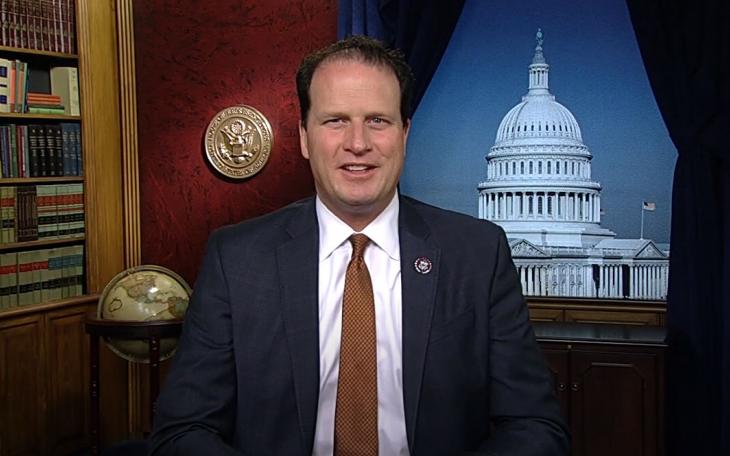The school district’s perceived blackmail attempt from the last City Council meeting paid off for them on Tuesday, when the issue was brought back before the Council for Charlotte Farmer’s tie-breaking vote.
Farmer was absent from the Nov. 9 meeting, when the SAISD bargained for an additional 960,000 gallons of water for the planned seeding of winter rye grass on four baseball and softball fields, stating they’d compromise the other estimated five million gallons of water usage in turn.
The five million gallons of savings were estimated by assessing the previous year’s water bill and cutting irrigation to other areas to focus strictly on the planned seeding. City Council, namely Rodney Fleming, did not agree.
“The mistake you made last time is you told me you don’t need this five million,” Fleming said to SAISD Maintenance Director Jim Elson, with whom he’d had a heated argument at the previous meeting. “If you don’t need it, you shouldn’t be using it at all.
Elson had previously stated that if he did not receive the requested million gallons, he’d proceed to use all five as he has in years past, and that despite the current drought conditions.
Council was tied on whether to proceed or deny, and Charlotte Farmer’s absence hung the voting until Tuesday, Nov. 20.
As the Mayor introduced the agenda item, Fleming said he had a few questions and asked who the school district’s representative would be, and Jim Elson approached the stand. “My buddy,” said Fleming ironically, then asked Elson if he’d been the one who had overseeded the fields in previous years.
Overseeding, which is literally the seeding of grass over existing turf, is very time and temperature sensitive, and also requires heavy amounts of water in the seeding stages.
Elson said, “We probably would have done it [overseeded] a bit earlier, but they [the school district] do hire people to tell them when to do it. This year, the ground temperature for it to germinate was not right until last week,” he said. “It all depends. We look at the temperature of the ground basically to determine when we can overseed.”
The window for the seeds to be distributed in order for them to germinate isn’t wide open, so any overseeding plans have to revolve around the limited timeframe provided by the weather and the seasons. This means that the urgency of the issue from the SAISD perspective was high, as preparations for the overseeding had already been made at the expense of taxpayers.
A narrow timeframe and a list of expenses could explain the weight the SAISD threw behind their five million gallon bargaining chip. But Rodney Fleming isn’t buying it.
“You told me you were going to cut it, five million,” Fleming said to Elson. “I don’t think you’re going to do it, but we’re going to see. I hope that you prove me wrong.”
“I’m standing here for the safety of our children on them fields, and the investment of taxpayers, what I think is best,” Elson countered. It isn’t about proving anybody wrong.
Noble as his intentions may be, Elson’s promise is pretty empty, Fleming says. “I’ve got the water usage for you guys over the last three years. I have a feeling of which way this vote is going to go. I ‘m going make sure to watch that you cut that down, I mean significantly. I’m serious about this,” he said.
The school’s water bill from previous years does indeed show roughly five million gallons of usage district-wide for this time of year, which makes the offer seem legit. Scrutiny of the numbers, however, shows that those five million gallons represent the total consumption, of which 3.5-4 million gallons is general consumption not tied to irrigation. In other words, unless SAISD cuts off all the water fountains, stops flushing toilets, and quits serving up instant mashed potatoes in the school cafeterias, it is highly unlikely that more than 1-1.5 million gallons will be saved in this compromise.
Measuring water expenditure on the school’s end isn’t exactly easy either, as there are currently no individual meters for irrigation. Elson stated that he is currently working on is getting those meters in place so that usage is easier to track.
“…a big piece of my budget is utilities, and not just water…we try to do everything we can to save on our utilities,” Elson said, noting that one of his primary goals as Director is to cut back on water.
One of the ways the school district will be able to do that is by using artificial grass.
“There is good news as far as watering,” Elson said. “Last night, our board did approve to take three large areas—the area at central, the area at Lake View, and what they call Old Bobcat—and we are gong to be putting turf in there, which will cut down our watering quite a bit.”
How long it will take to implement the plan was not mentioned at Tuesday’s meeting.
Several local schools have also cut back on their green spots, choosing alternative forms of “landscaping” that are more drought-friendly. Making her vote on the matter clear, Farmer said, “I definitely see the value in your proposal and your request. It’s not that we’re putting sports before the people..I do see that you do have a plan,” she said, referencing these green-free zones on some campuses. “It’s beautifully done in the landscape scheme of concrete.”
On one man’s word and a million gallons of the City’s most valuable resource hanging in the balance, the motion to approve was made. The motion was approved, 4-2, with Fleming and Mayor Morrison voting to deny the request. Councilman Marty Self, who had previously voted against the proposition, turned his vote in approval Tuesday.
Fleming’s eyes will be on the district like a hawk for the next several weeks, counting the drops of San Angelo’s promised five million.
Subscribe to the LIVE! Daily
Required






Comments
- Log in or register to post comments
PermalinkListed By: Chelsea Reinhard
It's this time of year, specifically average water usage for the district in October and November. I wasn't meaning to be ambiguous in the last story--that was an oversight. Since we were talking about watering over a span of a four weeks, I thought it was clear that the water was also coming from a single month's bill. On average, SAISD has used roughly 5 million gallons of water total in the month of October in the last two years, and approximately the same amount in November. Breakdown is as mentioned in the article, with the majority being used in school facilities.
- Log in or register to post comments
PermalinkPost a comment to this article here: